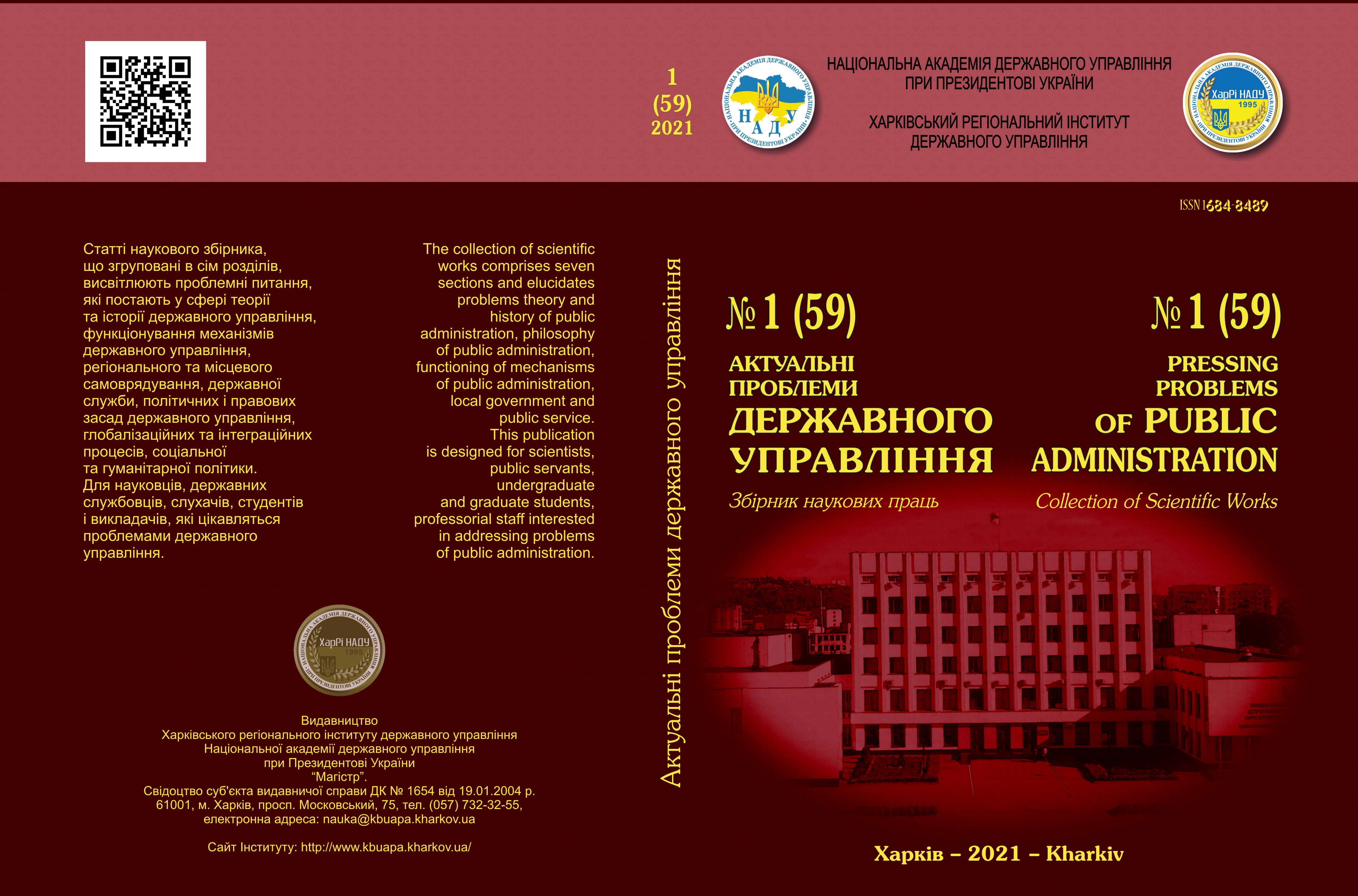THE ESSENCE OF THE CONCEPT OF “PUBLIC-PRIVATE PARTNERSHIP” IN THE SPHERE OF СULTURE
Abstract
The article provides a legislative definition of public-private partnership. It was also found out that the existence of a numerous points of view on the definition of public-private partnership has led to the emergence of a scientific debate about a question if there is a demand for a single, universal definition of public-private partnership. We suggest proceeding study of the approaches to public-private partnership definition through highlighting different aspects of the cooperation, mentioned by various scientists and experts in public-private partnership. Therefore, we consider necessity of studying four conceptual approaches to understanding the genesis of public-private partnership such as organizational, financial, target and political ones that exist in the legal, economic and sociological sciences.
The study shows that the scientists’ approaches to the definition of public-private partnership are diverse and heterogeneous. Some authors focus on the social importance of joint projects of state and business, others observe it as an instrument for solving state’s problems in the economic or social spheres, some of them consider it as a method of achieving benefits for the participants of the partnership.
At the same time, analyzing the definitions given in the article, we can conclude that they all overlap and mainly imply several statements. Firstly, cooperation in the form of an agreement or a convention aligned to ensure legal equality of the parties. Secondly, the purpose of such cooperation must be aimed at achieving the highest public good. In addition, it is equally important to implement the project based on ensuring a qualitatively better result than the implementation of the same actions, but without a private partner.
Also analyzing the scholars’ views on the definition of public-private partnership, we can conclude that this definition should be considered in a narrow and broad sense.
In our research, we ascertain that all scientific approaches elucidate various aspects of public-private partnership, and therefore only their combination can give a holistic comprehension of this phenomenon.
Downloads
References
Varnavsky, V. (2004). Gosudarstvenno-chastnoye partnerstvo: nekotoryye voprosy teorii i praktiki. Domestic notes, issue 6 (21). URL: http://www.strana-oz.ru/2004/6/gosudarstvennochastnoe-partnerstvo-v-rossii-problemy-stanovleniya [in Russian].
Varnavsky, V. (2011). Gosudarstvenno-chastnoye partnerstvo: nekotoryye voprosy teorii I praktiki. Mirovaya ekonomika i mezhdunarodnyye otnosheniya, issue 9, 41–50 [in Russian].
Gosh, O. (2012). Pro ekonomichnu sutnist poniat “spivrobitnytstvo” i “partnerstvo”. Ekonomika Ukrainy, issue 5, 91–95 [in Ukrainian].
Hrytsenko, L (2012). Kontseptualni zasady derzhavno-pryvatnoho partnerstva. Visnyk SumDU. “Ekonomika”, issue 3, 52–59 [in Ukrainian].
Danasarova, S. (2007). Institut chastno-gosudarstvennogo partnerstva: stanovleniye I razvitiye v Rossii [Institute of Public-Private Partnership: Formation and Development in Russia]. Candidate’s thesis. Ulan-Ude [in Ukrainian].
Danylyshyn, B. Analiz rehuliatornoho vplyvu pry vprovadzhenni Zakonu Ukrainy “Pro zahalni zasady rozvytku derzhavno-pryvatnoho partnerstva v Ukraini” [Analysis of regulatory impact in the implementation of the Law of Ukraine “On General Principles of Public-Private Partnership Development in Ukraine”]. Departament investytsiinoi ta innovatsiinoi diialnosti. URL: www.me.gov.ua/control/uk/publish/article/system [in Ukrainian].
Danylyshyn, B. Derzhavno-pryvatne partnerstvo – stratehichna forma vzaiemodii vlady i biznesu [Public-private partnership is a strategic form of interaction between government and business]. URL: http://news.yuristonline.com/news/kmu/2 [in Ukrainian].
Zapatrina, I. (2011). Derzhavno-pryvatne partnerstvo yak faktor ekonomichnoho zrostannia ta problemy yoho rozvytku v Ukraini [Public-private partnership as a factor of economic growth and problems of its development in Ukraine]. Ekonomist, issue 3, 52–58 [in Ukrainian].
Mykheev, V. (2007). Gosudarstvenno-chastnoye partnerstvo v realizatsii prioritetnykh natsionalnykh proyektov [Public-private partnership in the implementation of priority national projects]. URL: http://viperson.ru/articles/miheev-v-a-gosudarstvenno-chastnoe-partnerstvo-v-realizatsiiprioritetnyh-natsionalnyh-proektov [in Russian].
Perspektivy razvitiya gosudarstvenno-chastnogo partnerstva v Ukraine. Zasedaniye “Yuridicheskogo press-kluba”. URL: www.press-club/org.ua/index.php?option/ [in Russian].
Pyltiai, O. (2011). Suchasni kontseptsii ta pidkhody do vyznachennia derzhavnopryvatnoho partnerstva. Ekonomika. Upravlinnia. Innovatsii, issue 2. URL: http://nbuv.gov.ua/UJRN/eui_2011_2_40 [in Ukrainian].
Poliakova, O. (2009). Derzhavno-pryvatne partnerstvo v Ukraini: problemy stanovlennia [Public-private partnership in Ukraine: problems of formation] Kommunalnoye khozyaystvo gorodov. “Ekonomicheskiye nauki”, 87, 317–322 [in Ukrainian].
Pro derzhavno-pryvatne partnerstvo: Zakon Ukrainy vid 01.07.2010 r. № 2404-VI (zi zminamy i dopovnenniamy). URL: https://zakon.rada.gov.ua/laws/show/2404-17.
Blondal, J. (2005). International Experience Using Outsourcing, Public Private Partnerships and Vouchers. = Arlington VA: IMB Centre for the Business of Government.
Building Better Partnerships: Executive Summary. London: IPPR, Commission on UK Public Private Partnerships, 2001.
Green Paper on Public-Private Partnerships and Community Law on Public Contracts and Concessions. Commission of the European Communities. Brussels, 30.04.2004. URL: http://eurlex.europa.eu/LexUriServ/site/en/com/2004/com2004_0327en01.pdf.
Greve, C. (2003). Public-Private Partnerships in Scandinavia. International Public Management Review, vol. 4, 2, 59–69.
Hodge, G., Greve, C. (2007). Public Private Partnership: An International Performance Review. Public Administration Review, vol. 67, 3, 545–558.
Van Ham, H., Koppenjan, J. (2001) Building Public Private Partnerships: Assessing and Managing Risks in Port Development. Public Management Review, vol. 4, 1, 593–616.

